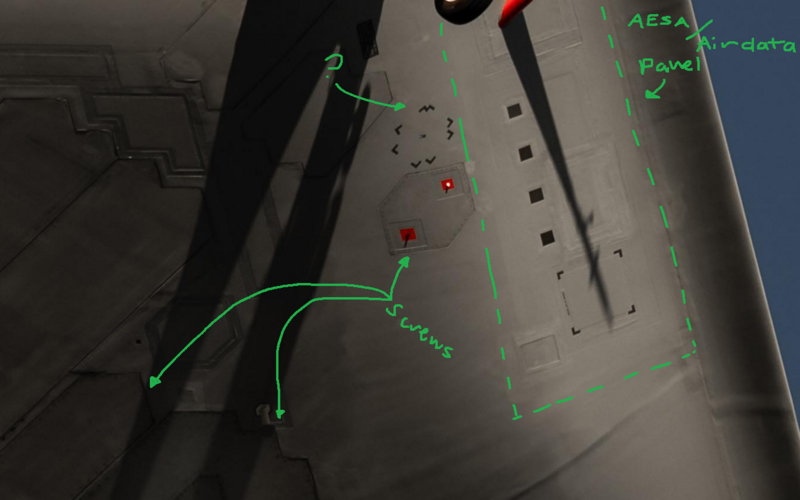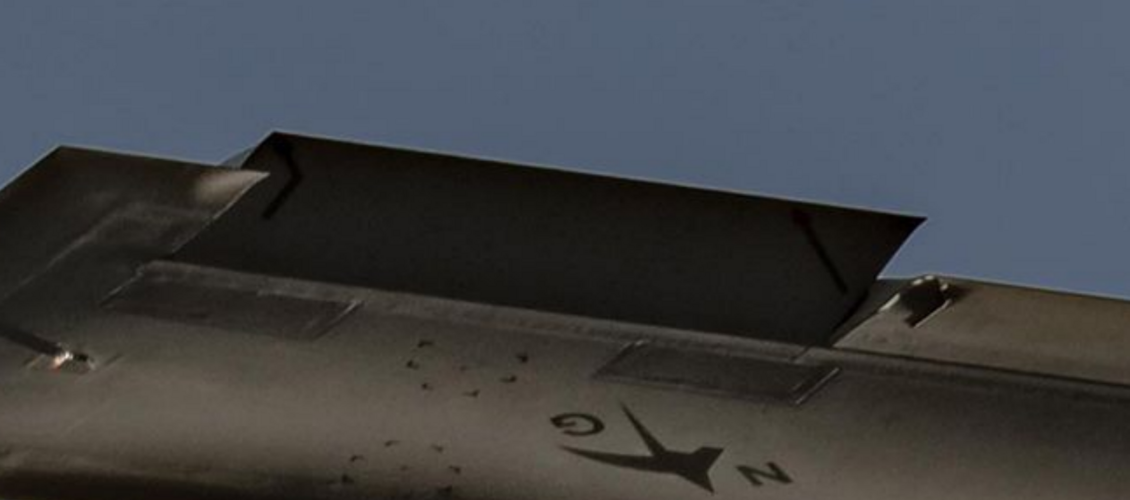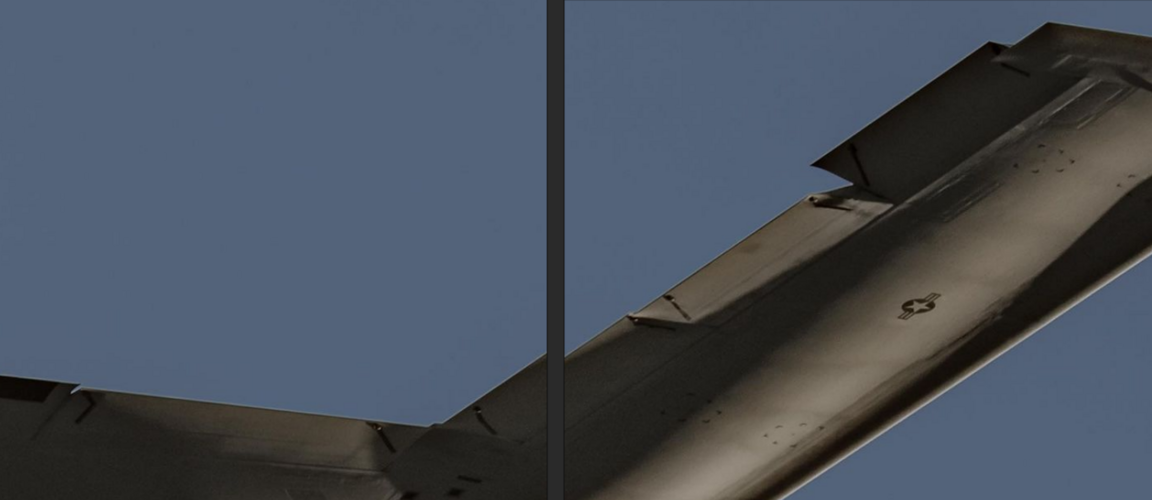It's actually incredibly difficult to see the seam tape on the first 'production' raider, and it could honestly be quite a bit more advanced than that on the F-35, especially considering how it's development only started what, 10 years ago?
something that is interesting that screws are still present - likely for panels that are frequently accessed. Hydro/Mech bay, Engine Bay, and the foremost bay with red squares (flight computer / cockpit avionics access?) all have screws visible.
However, if you look at the radar/air data panel, it's not going to be opened anywhere near as much as the aforementioned panels, so it's sealed and finished shut (quite flawlessly, might I add). Note that this image is slightly enhanced, and the light makes it easier to spot these details.
Finally, note the "?" next to the square(ish) markings. This could be a panel that is so perfectly meshed with the skin (through tape, other means) that it needs these specific markings to indicate it's location.
perhaps this is better off in the B-21 raider thread...
View attachment 727848




